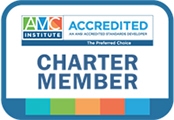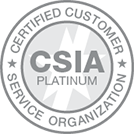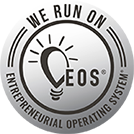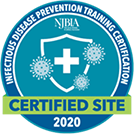Maximizing Organization Board Efficiency & Minimizing Costs

Several of the tools and concepts in this article are components of the Entrepreneurial Operating System (EOS)® method, which AH follows. As indicated throughout (*), free tools are available from EOSworldwide.com/EOS-tools (Click on Download EOS tools).
The ever-changing landscape of the digital world in which we live is requiring associations to be nimble, cost-efficient, and leverage technology like never before. It’s always a good time to make sure you have the right people and a great organizational culture to weather these challenging times. AH’s Consulting Services team has conducted many operational assessments for organizations to assess and make recommendations on their people, processes, and technology. While every organization has its own unique challenges, several common themes emerged during recent operational assessments:
- Roles and Responsibilities
- Communication
- Process Improvements
- Technology
- Culture
The issues and solutions uncovered are lessons every organization can learn from and implement to operate most effectively during these uncertain times.
Roles and Responsibilities
Every organization must clearly define each staff member’s responsibilities and accountability at an activity level. There are numerous benefits to doing so:
- Eliminate misunderstanding
- Determine ownership
- Reduce duplication of effort, which results in increased productivity
- Ensure a balanced distribution of work
- Identify bandwidth challenges and availability
- Better trained staff as to the overall activities of the organization
- Improve communication among the team
To help a team do this and to uncover current challenges in this area, we create RACI charts that outline at a task level who has Accountability, who has Responsibility, and who needs to be Consulted with or Informed upon completion. Accountability and responsibility should be pushed down to the lowest feasible level of the organization chart.
Once the RACI exercise has been completed, job descriptions should be updated to ensure they reflect the current accountabilities and major responsibilities of each staff member.

Another useful exercise related to the RACI charts is the creation of an accountability chart* for the organization. It may look like a standard organization chart, but an accountability chart starts with the premise that there are only three major functions (that might split into more distinct functions) that make every organization run:
- Sales and Marketing (product sales, member sales, sponsor/exhibit sales, and the marketing for all of it)
- Operations (education, events, publications, programs, and member services)
- Administration (infrastructure, technology, HR, finance, and administration)
To maintain accountability, only one person can ultimately oversee any major function within the organization. When more than one person is accountable, nobody is. If any of the three major functions are weak, the organization is not as effective.
Once the functions are clear, each seat is defined by five major roles. Anyone who has people reporting to them is responsible for leading, managing, and holding people accountable—also called an LMA role – as one of their five roles. This requires time, energy, and unique ability.
The RACI charts, job descriptions, and accountability chart should be shared with staff and used in new hire onboarding.
Communication
Another recurring challenge found in organizations where we conducted operational assessments was communication—top down, cross-departmental, inter-departmental, and between supervisors and their direct reports. To address these challenges, we recommend implementing a regular meeting pulse organization-wide that includes:
- All-staff meetings
- Leadership team meetings
- Department meetings
- 1-on-1 meetings with direct reports
Meetings should be scheduled for the same day and time and follow the same agenda format. At AH we use Gino Wickman’s Entrepreneurial Operating System (EOS) Level 10 meeting agenda* for all meetings. Using this meeting agenda format increases communication, accountability, team health, and results. The Level 10 Meeting agenda has three major sections: 1) the reporting section, 2) the issues solving section, and 3) the conclusion. The ideal meeting duration is 90 minutes and 60 minutes of that is to be spent on issue solving (with issues prioritized and tackled in order).
As a result of meeting more and following the prescribed meeting format, communication will improve, and everyone will get more done as the time spent meeting will actually free up time.
Process Improvements
Processes determine the effectiveness and efficiency of your organization’s operations, the quality of your members’ experience and ultimately your financial success.
Every organization contains a large number of business processes. Some are simple processes carried out in a single department, such as processing a publication order. Others are more complex processes implemented throughout your organization, for example, developing successful products.
Some are core processes—those that deliver value directly to the customer, such as customer support and product development. Others are support processes—they enable core processes and include hiring, budget approvals, and other everyday operations.
Everyone in your organization carries out many different processes every day. But because business processes are invisible, many people don’t consciously think about them or realize the impact they have on an organization’s performance. Instead, when problems develop, its assumed that it’s a people or technology problem. Most difficulties stem from flawed processes that are inefficient or outdated.
Consider the following questions to determine which processes within your organization are ripe for process improvement:
- Which processes have bottlenecks?
- At which point does the process break down or experience delays?
- At which points in the process do people (staff, volunteers, members, other stakeholders) typically experience frustration?
- Which parts of the process seem to consume a lot of time?
- What causes the bottleneck (too many people/departments involved, manual tasks, overly complicated/too many steps, technology, volunteer hold-ups, other)?
- How can the process be improved?
- What is the ideal process, regardless of current job titles or responsibilities?
- Can steps be simplified or re-arranged to be more efficient?
- Can the person doing the work make decisions about the work (or does it need approval)?
- How few people can be involved in the process (the fewer the better)?
- Are there interdepartmental issues that, if resolved, would improve the process?
- Can steps be automated?
Another key element of process improvement is making sure everyone is following the same process. To do this, an organization should determine and document its core processes and then ensure that they are followed by all.
According to Gino Wickman, there are two key steps that leadership teams must take in order to systemize their core processes*. The first is to identify, simplify, and document all of the core processes within the business. The second is to ensure that everyone in the organization follows these processes.
To begin, the team should identify, define, and agree on what their core processes are. These core processes (typically 6-10) are similar in every organization, no matter how big or how small, and typically include processes in HR, marketing and sales, operations, accounting and customer-retention. No matter how many core processes leadership teams identify, everyone needs to be on the same page in terms of what to call them and what they consist of. Doing this creates clarity, reduces confusion, and gets everyone speaking the same language.
Technology
There were several themes that emerged regarding technology challenges that organizations can implement to improve operations.
- Integrations: Systems should be integrated to the greatest extent possible. That includes the association management system (AMS), learning management system (LMS), website, accounting system, and any other systems/solutions. A lack of integration is inefficient, can result in user errors, and is frustrating for internal and external stakeholders, who expect a seamless experience.
- Automation: Organizations should be leveraging technology and automating as many manual processes as possible.
- Accounting processes (bill paying, credit card reconciliation, chapter reimbursements, etc.) seem particularly ripe for automation.
- Accounting processes (bill paying, credit card reconciliation, chapter reimbursements, etc.) seem particularly ripe for automation.
- Project Management: These organizations relied on spreadsheets and email for timelines, project management and team communication. There are many cloud-based project management tools (Smartsheet, Redbooth, MS Teams, etc.) that could be used instead. A good project management tool will make staff more efficient, improve collaboration, increase communication and visibility into what others are working on, allow for better work planning, delegation and time management, provide for each document sharing and access, and standardize processes and timelines. It also allows for more effective remote working.
- Selection/Roll-out/Training: A final technology-related challenge was the process by which the organizations vetted, implemented, and trained staff on new technology solutions. Staff were not involved in exploring options, there was no explanation as to why the chosen solution was selected, and staff had to learn the new system with very little training. To eliminate these challenges, staff should be involved in determining system requirements prior to a vendor being selected and proper training should be provided upon roll-out and for each new employee.
Typically, associations have been slow to adopt technology and don’t allocate adequate resources to technology. Now more than ever, associations that do not quickly bridge their technology gaps risk becoming less relevant to members with each passing day. Organizations should not be afraid to tap into reserves or stop programs that are not delivering real value and use those resources to make the technology investment.
Culture
A final reoccurring challenge in the organizations for which we conducted operational assessments was related to culture. Themes that emerged from individual staff interviews that indicated a culture problem existed included silos, cliques, fear, favoritism, grapevine/rumor mill communication, untapped potential/no opportunities for advancement, lack of transparency, finger pointing, scapegoating, distrust, lack of accountability, disrespect, and resentment.
The organizations that had a culture problem all lacked core values. Establishing core values for the organizations were the first step in addressing the culture challenges they were experiencing.
Core values are guiding principles for the organization. They define your culture and who you are as people. When they are clear, they attract like-minded people to your organization and will weed out people that don’t fit. Once defined, the organization should hire, fire, review, reward and recognize people based on these core values.
There are several ways an organization can go about defining its core values. In one of the operational assessments, staff were surveyed to react to a list of potential core values (pulled from job descriptions and staff interviews) and add ones they thought embodied the staff culture. Leadership then reviewed the list and narrowed it down to six core values that resonated with staff.
As a first step, an organization’s leadership team (executive director and directors/managers) creates an initial list of characteristics they’d like to see exemplified in staff (they may be aspirational vs. current reality), narrow it down to those they deem most important (5-15), and then ask for input from the rest of the staff to narrow it down to between three and seven core values.
Once there is agreement on the core values, they should become the guiding force in the organization and be incorporated into the hiring, firing, and evaluation processes.
As part of AH’s annual review process, we evaluate every staff member against the core values using a “People Analyzer,”* which is a part of Gino Wickman’s EOS methodology. For each core value:
+ He/she exhibits the core value most of the time
+/- Sometimes he/she exhibits the core value and sometimes he/she does not
- He/she does not exhibit the core value most of the time
Wickman’s recommended bar for an organization with five core values is three pluses, two plus/minuses and never a minus, but that bar is to be determined by each organization. The key point is that anyone who is at or above the bar is the right person and your goal is to get 100% of the right people in your organization.
Another part of the annual evaluation is a GWC assessment*, which assesses whether individuals in their current role:
- Get it = understand their role, the culture, the systems, the pace and how the job comes together.
- Want it = they genuinely like the job and want to do it.
- Capacity to Do it = have the time as well as the mental, physical, and emotional capacity to do the job well.
If there are concerns regarding their alignment to the core values and/or the GWC assessment, Wickman suggests following the Three-Strike Rule.
- Review the People Analyzer results with the person, communicate your expectations and give him/her 30 days to better his/her performance.
- If you don’t see improvement, discuss his/her performance again and give him/her another 30 days.
- If you still don’t see improvement, he/she is not going to change and must go.
Should My Organization Conduct an Operational Assessment?
Ask yourself the following questions to determine whether your organization should conduct an operational assessment:
- Is your team challenged with meeting quality, cost, or time requirements?
- Are there external developments that may require considerable adjustment to current processes?
- Are there changes within your organization that may suggest the need for process improvement?
- Have you seen evidence of fragmentation and lack of cooperation in how work is being carried out?
- Are customers complaining about the quality of service they are getting?
- Does your team’s performance compare unfavorably with that of other teams that do similar work?
- Are employees expressing frustration with their job responsibilities?
- Do tasks often get done incorrectly the first time?
- Are some tasks taking too long to complete?
- Do certain procedures seem overly complicated?
If you answered yes to a majority of these questions, your organization would likely benefit from an operational assessment.
Can We Do the Assessment Ourselves?
Whether to engage an outside consultant to conduct the operational assessment is another consideration. There are pros and cons to using a consultant and managing the assessment in-house.

A consultant is helpful because he/she can take an unbiased look and may know of potential solutions that the internal staff is not aware of.
However, it can be done internally. The lead should be someone with a consultant mindset: problem solver, unafraid of change, and able to filter out extraneous information to focus on critical issues. If it’s being done on a functional or department level, having someone outside the department be the lead is helpful. Ideally, more than one person would participate in the staff interviews—a subject matter expert and a big picture thinker—so you can more easily assess the current state and make recommendations.
If your organization is interested in engaging AH to conduct an operational assessment please email inquire@ahint.com .



